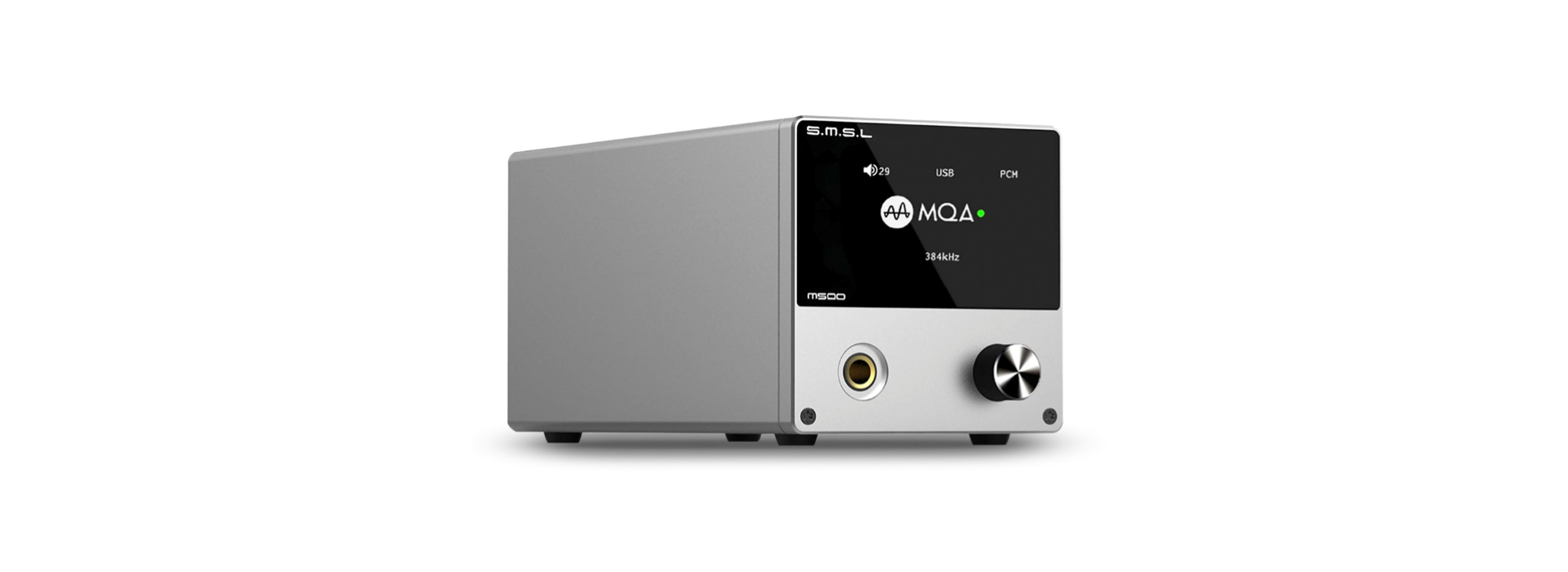Probably the biggest hype I ever encountered in the headphone kingdom was the announcement of THX AAA 789 headphone amp by Massdrop. People called it as the Holy Grail of headphone amplification, as an End-Game, shift+delete your head-fi account type of amp. Everybody dreamed about it and everybody wanted one. That is not because it was expensive, not at all, at only $400 it was among the cheapest balanced and powerful desktop headphone amp I knew about. Everyone dreamed about it because of the availability of that particular amp, the first batch was sold out in one hour I recon, the second batch sale lasted few hours and only the third one lasted a day or so. I am not that lucky by nature so obviously I forgot to pre-order one and put my hands on it. People were selling it on the used market at higher prices than MSRP! Its demand was much bigger than supply, the hype was real!
A year passed and people are still genuinely interested in it, it carries two THX AAA-788 stereo modules known for lowest distortion, high output power and close to zero coloration. If you wanted to go all-in for the best available THX chips available: the dual-mono only THX AAA-888, you needed to shelve some serious cash for the $3000 Benchmark HPA4 that I also reviewed and later on purchased for myself as I couldn’t sleep at night without one, that’s how good it sounded with all my headphones. Benchmark Media was the sole manufacturer with for the top-of-the-line THX modules but that soon changed with the introduction of the $289 SMSL SP200 headphone amplifier – It’s super affordable, it’s small, has RCA and XLR inputs and a gain switch, should it deliver impressive sonics? Let’s check that out!

1. Inside the Box
When I picked up the fairly small and lightweight box from the delivery courier, as usual, my doubts started working me from the inside. A serious headphone amp should be big and heavy, carry toroidal transformers and should be carved from 20-kilo aluminum ingots, right?
Unboxing it I couldn’t believe how small and lightweight it was, it brought a smile to my face. At the same time, I remembered how good my former reference Gilmore Lite Mk2 from Headamp sounded, or the Burson Fun or even the cute Bacillus from Erzetich Audio, all were small but huge in terms of sonics.
Inside the foam protected box, you’ll find the SP200 unit, a power cable and some papers with its detailed specifications. No user manual to be found but sincerely this is only a headphone amp with no additional features, I don’t think a user manual is needed, just attach your source to it, select RCA or XLR on the front and listen to some tunes.
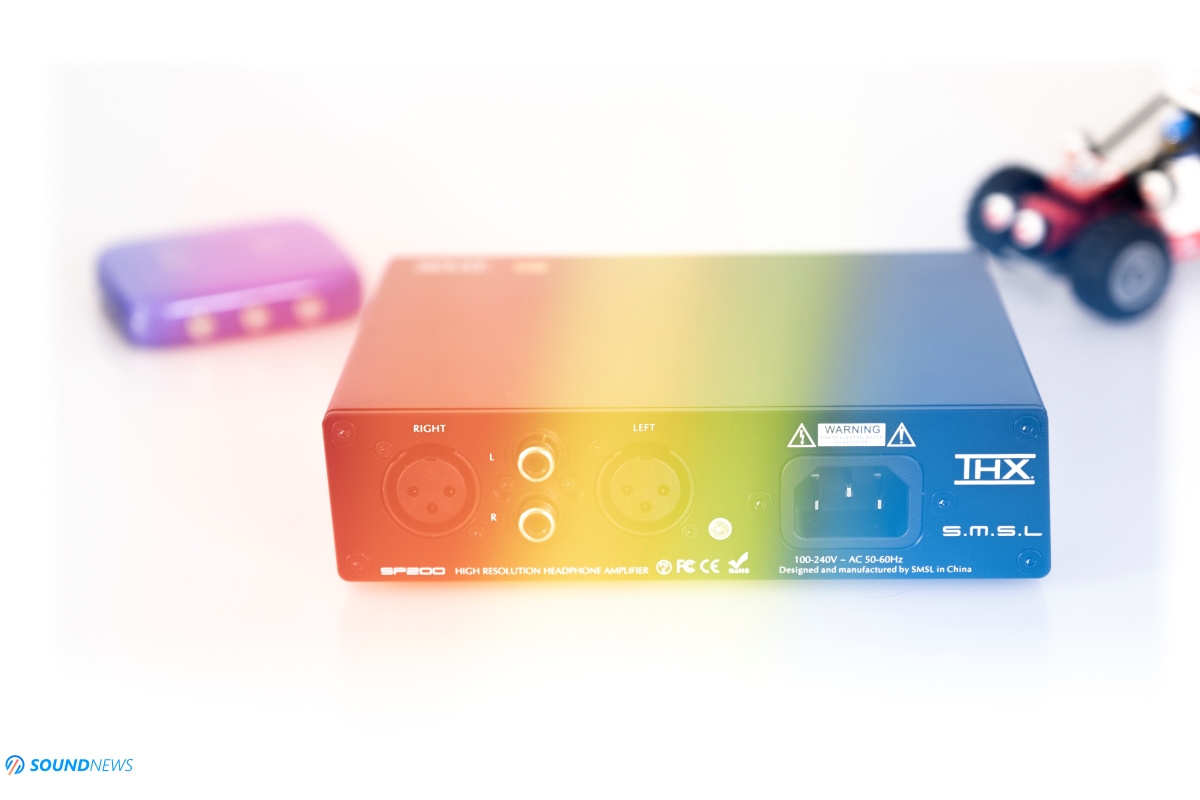
2. Design & Build Quality
What surprised me really, is that it doesn’t have an external switching power supply like how THX-789 by Massdrop is having, but has it inside the unit, if the audiophile in you wants to use some fancier power cables you can do that with SP200 and you can’t with THX-789.
Build quality is great, the case seems to be aluminum milled on a CNC machine, the case is thick and the back and front panel are even thicker. It has rubber feet underneath in small cut-outs so those will not wobble around. Its build quality is pretty much on the same level as THX-789 from my perspective, I have no complaints.
On the front panel you have two headphone outputs: a ¼” and a 4-pin XLR output, an On/Off switch, an RCA or XLR input selector, a High/Low gain selector and a volume wheel. No display, but it’s really not needed for a pure analog amp.
On the back, you have a universal 100 to 240V AC input, so you can use it anywhere on the globe without changing a jumper or flipping a switch, you also have an RCA and an XLR input. It doesn’t have any analog outputs so it can’t work as a line-stage (preamp).
When I first looked at it, I wasn’t really sure I am looking from a right angle at it, but when I got to play with it in my hand, I observed the slightly angled case. I think it looks interesting, it’s not over the top and most importantly doesn’t have any sharp edges. The only thing that bothers me a bit is how easy I can turn the volume wheel, it has very little mechanical resistance and sometimes I just raise the volume way too easily to uncomfortable loud levels.
3. Technology Inside SP200
This is where it gets super interesting. HPA4 by Benchmark Media has a competitor now at just 1⁄10 of its price as SP200 is also using dual-mono THX AAA-888 circuitry inside. If you never heard about those, THX modules are reducing harmonic, intermodulation and crossover distortions by 20 to 40 dB compared to regular headphone amplifiers, offering a truer to life, a realistic and fatigue-free listening experience. All was possible by using patented feed-forward error correction to null conventional distortion and noise levels.
SP200 will deliver up to 6W of power into 16 ohms or 3W in 32 ohm loads on both ¼” and 4-pin XLR outputs, it doesn’t really matter if you have a balanced headphone cable or not, it delivers its full power on both outputs. With all those impressive numbers it should drive even the most demanding headphones as high impedance dynamics or current-driver planar-magnetics, we will of course test both instances.
It has an output impedance close to zero ohms so damping factor should not be affected at all and at only 2.8 microvolts of noise under load it should pair nicely even with extra sensitive IEMs. What I really like about THX AAA amps is that they have their noise floor undetected at any volume levels, but will see about that very soon.
It seems that SMSL designed a special 24Watt power supply for this unit to be very efficient, small and obviously an ultra-low-noise one. It is encapsulated inside a metal shell, that is always a good sign and hum or hiss should be undetected. As with all THX AAA designs, the electrolytic caps are not in the signal path but are used for power filtering.
The volume works in the analog domain, this is an analog pot and at the lowest volume, there is a bit of channel mismatch, but going past 8 o’clock the channel balance comes back and is not something to be concerned about.
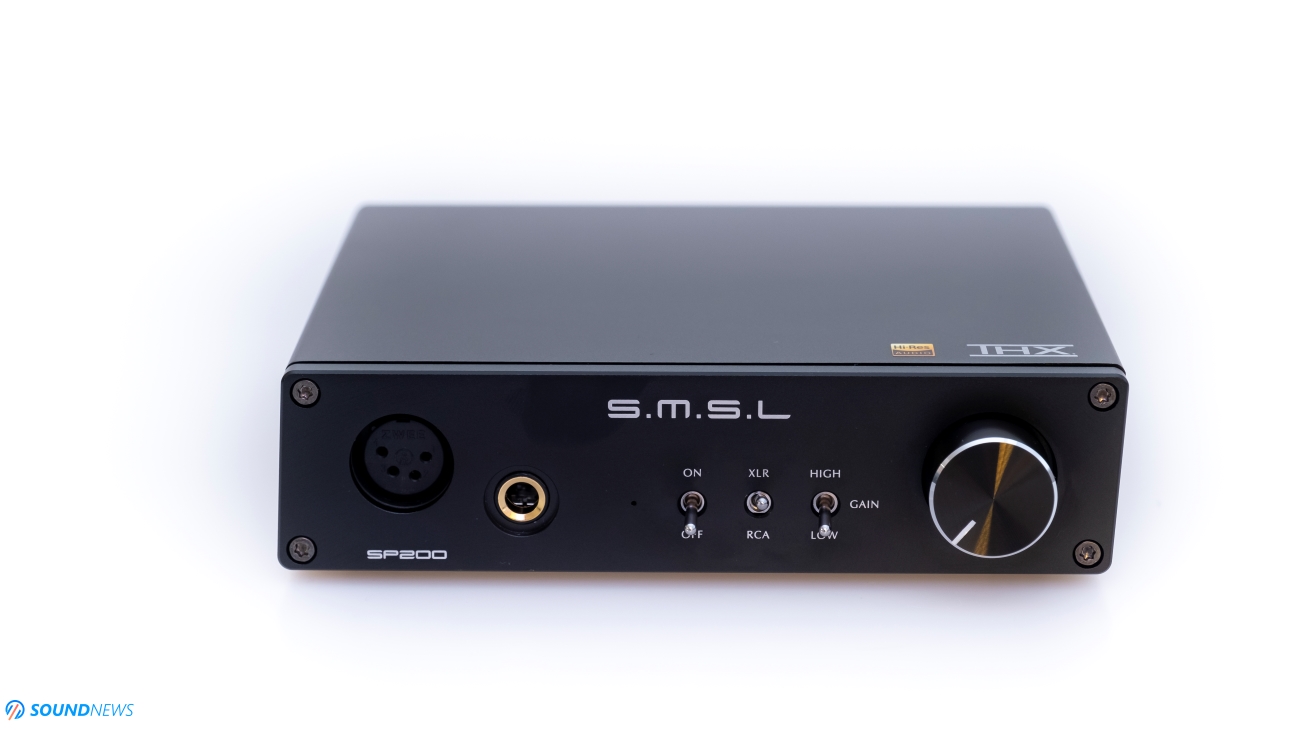
4. Test Equipment
To test SP200 at its maximum potential, a super linear and honest sounding source with close to zero colorations was needed, that is why I used a Matrix Audio Element X.
I will be testing the noise floor with FiiO FH7 and with Simgot EN700 PRO IEMs, the transient response will be tested via Quad Era-1, power output, control and linearity tests would be done via Hifiman Arya and I’ve thrown a Sennheiser HD660s into the mix as well, just for fun.
I’m happy to report that in few days I will also be comparing it to Massdrop THX-789 and with a Benchmark HPA4, it will be a battle of the titans and I am looking forward to that one.
Ok everyone, time to hit some eardrums.

5. Sound Performance
5a. Noise floor/Background noise
I connected my sensitive IEMs and I am glad to report that the noise floor is nowhere to be spotted in low gain mode. I was skeptical at first, since in low gain position it doesn’t have a unity gain of 0 dB, but a higher one at +6 dB that might induce a bit of hiss, but my fears are now gone. The background is black, all I hear is complete silence even at maximum volume. I tried High gain setting, I paused my music and I started hearing hum from about 10 o’clock position, however, if I would press play, I would go deaf at that volume. In low gain mode, it works exceptionally well and there is plenty of volume.
There is however a small issue with sensitive IEMs: it starts to be really loud really fast so take great care when you touch that volume wheel, I personally can’t listen at more than 8 o’clock position, at 9 it is way too loud for me. With portables like Sennheiser Momentum 3 and with Erzetich Thalia I can go higher, maximum to about 10 o’clock position and that’s it. Plenty of volume even on low gain. Funny thing is that except for one headphone, every headphone I tested worked great on low-gain position. I used high-gain only with Hifiman Arya for the best results.
In terms of the noise floor, SP200 is indeed playing with the big boys like HPA4 and THX-789 and may put to shame some more expensive designs.

5b. Tonality
SP200 stays true to the source it is fed by and true to the recording. It doesn’t add a lot from itself, it has close to zero colorations. I consider it linear sounding without putting an emphasis on anything. It's neither bright or warm, it sounds exactly like your source and your headphones. As such I can’t say it has a tonality, it is without one.
System matching is crucial with SP200, you really need to love your source as it will enhance all its sonics, including its flaws. With a great source, the final result will be great and with a mediocre source, the final result can be disappointing. I encountered this phenomenon multiple times even with HPA4 by Benchmark.
Some might say it even has incredible fluidity and smoothness, due to a very low noise-floor you have a darker room and louder sounding musical notes that somehow are bonded to each other. This is a different kind of smoothness, SP200 doesn’t roll-off anything in the frequency range, this is just how your music is supposed to sound when you take out all the distortions and noise floor.
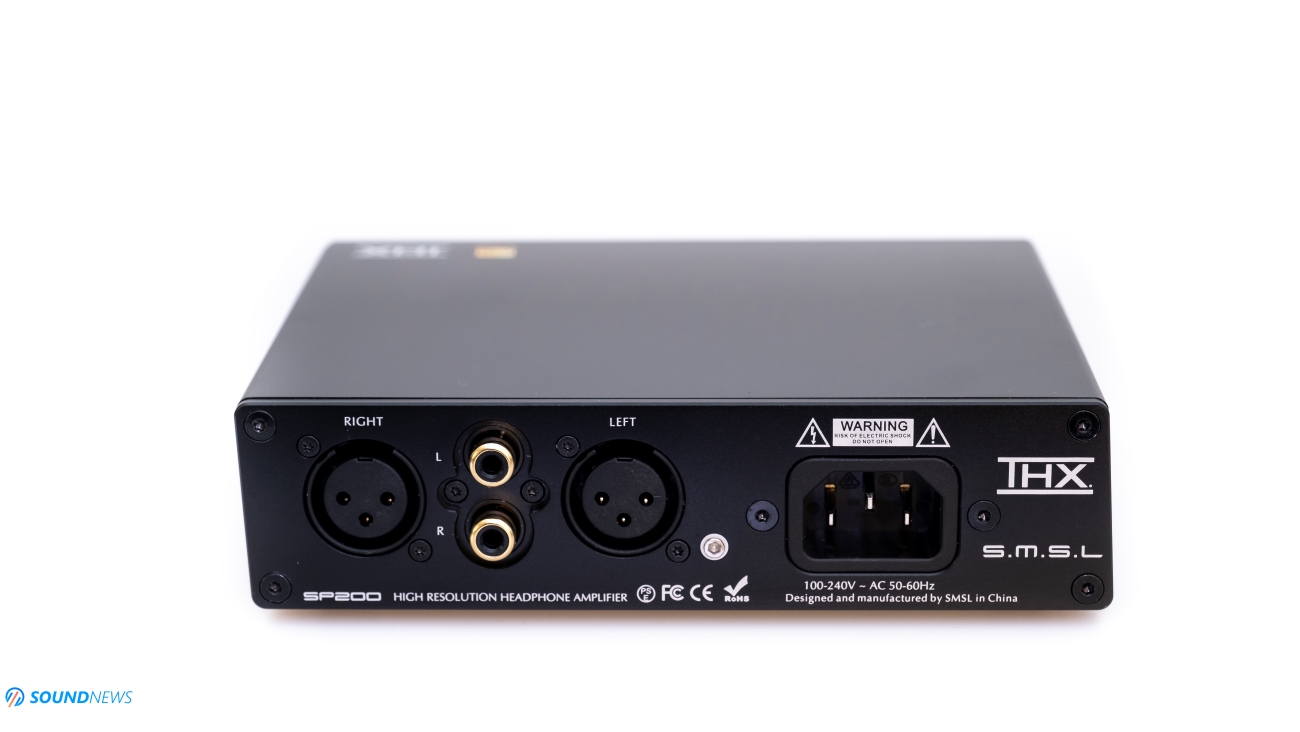
5c. Transparency & Resolution
This is where SP200 is shining brighter than other headphone amps, it feels at home when it comes to resolution. When you lower down the noise, you hear everything else clearer, louder and more outlined. SP200 as the rest of the THX family of products are excelling at recreating the original intent of the recording engineer, it will extract everything that the engineer intended us to hear. It is brutally honest – this could be a good thing or a bad thing. Badly mastered music becomes almost unlistenable, you hear all its flaws and you hear them very clear; some people don’t like that. As an owner of HPA4, I enjoy that a lot, I can review new records with this kind of gear and at the same time I enjoy those explosive dynamics it reveals in music that you never knew were there in the first place.
When noise and distortion lowers, I can now look at a bigger picture, I can appreciate the distance between a few notes, between me and the singer, everything becomes so much easier. SP200 has high transparency, all the flaws from my usual bass tracks to my rock tunes are easily spotted. If you want a revealing amplifier that will show all the strengths and cons of your source (digital or analog), SP200 will offer you that.
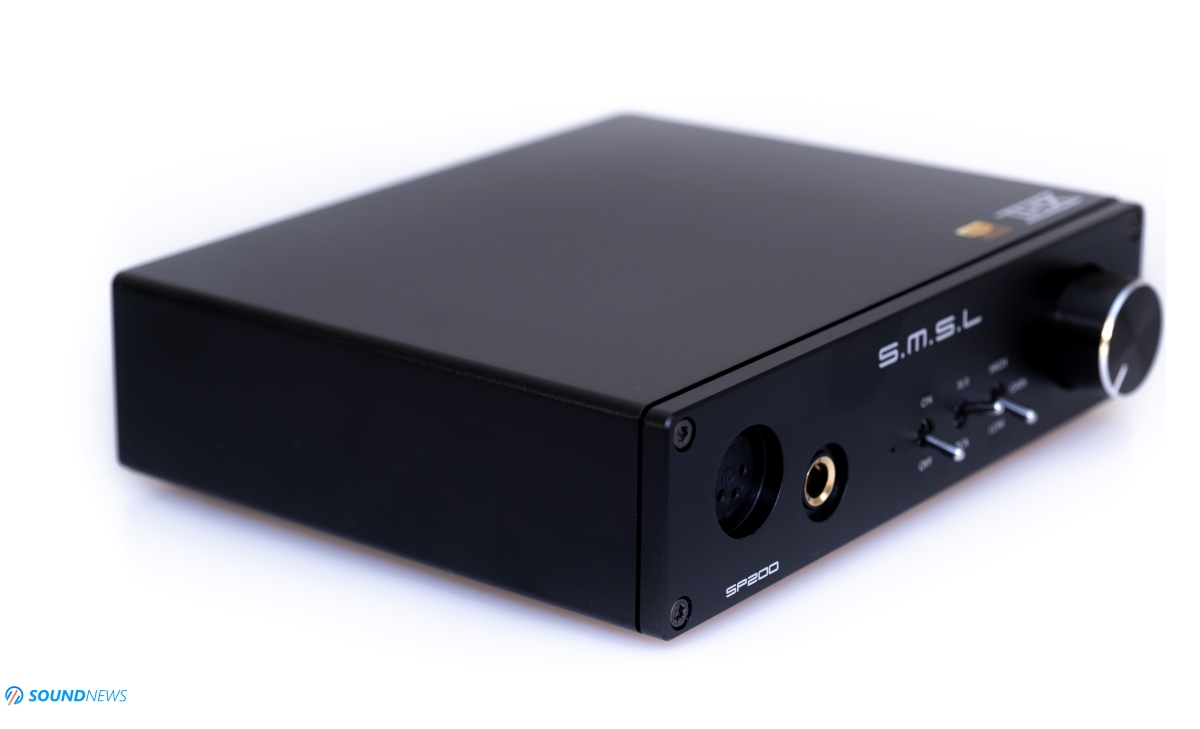
5d. Transient response
The best transient response I ever heard from a headphone transducer was heard on HPA4, if I move to faster-paced music it will always put a big smile on my face. It just grabs you and pounds you with tons of energy, speed, and impact, its spectral decay is perfect and diaphragms control as well. SP200 is the same but to a smaller degree.
My usual folk-rock tunes and my older electronica kicked some serious punch into my eardrums. It sounded grainy at first and treble was hotter than usual but just after a few hours, it didn’t sound that way anymore. Speed was back and the treble became detailed yet free of harshness as I remembered it.
With a close to zero impedance and a whopping 6W of power the damping factor is huge and transient response is on a very high level as well. Listening to Wolf Totem by The Hu at halfway thought the song will present a strong kick in the treble and a lot of presence in the midrange with that magical throat singing and horsehead fiddle that switches places from time to time, that mix was always punchy and kept a faster pace than usual.

5e. Soundstage & Depth
Probably the only thing that I don’t consider impeccable is the soundstage size, it is medium in size, sounds outside my head but doesn’t envelop my entire body how hybrid, all-tube designs or just bigger solid-state headphone amps are sounding. I don’t know what might be the culprit, maybe the power supply, maybe something else, THX-789 is sounding basically the same. Only the bigger and costlier HPA4 will present a bigger and more believable stage in front and around me.
In exchange, SP200 presented a really good see-thought depth where I can easily appreciate how far are all musicians and their location in a 3D field. Listening to Roger Waters you hear all those tiny sounds, tiny amounts of air moving around creating a feeling that I am not listening to headphones but to a cleverly positioned speaker system. With the right music, SP200 will present spatial cues and render all depth information.
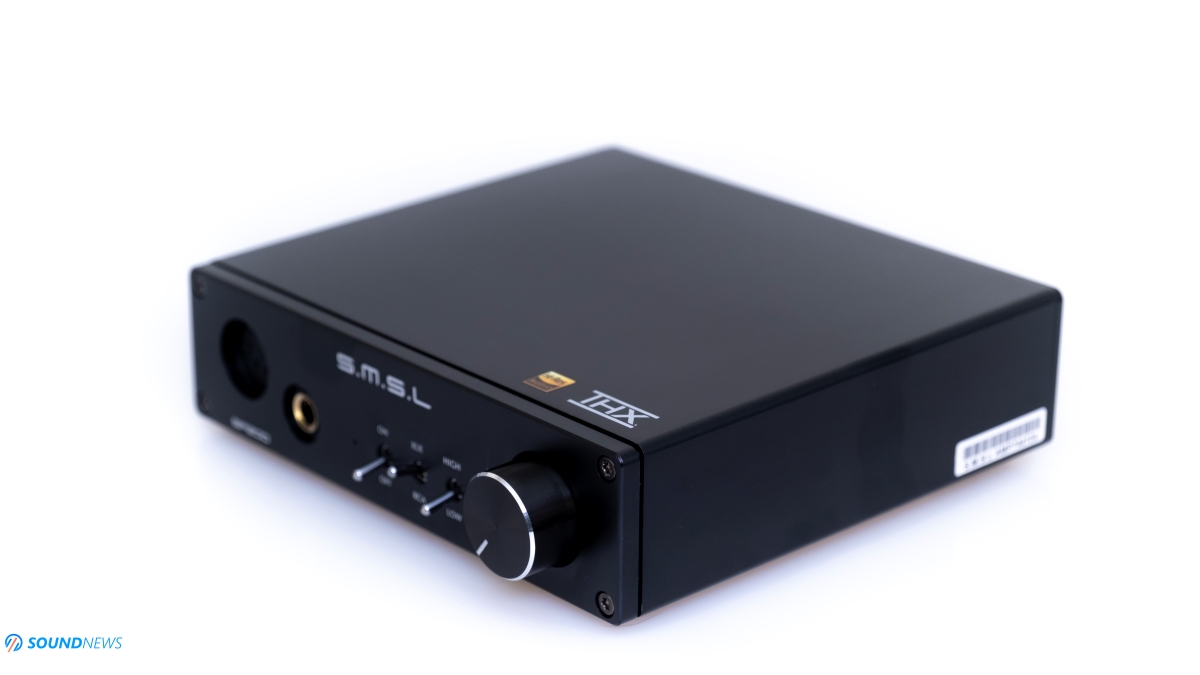
5f. Power Output
With Sennheiser HD660S I cannot go past 10 o’clock in low gain mode, with Quad Era-1 I can’t go past 11 and with Hifiman Arya I can’t pass 13 o’clock position. High gain is raising the gain to 18 dB – that is a 12 dB rise compared to low gain. With Erzetich Thalia or Sennheiser Momentum 3, it’s a child’s play, it will power them all easily without breaking a sweat. I presume it will do just fine will all planar-magnetic headphones with an exception or two (AB-1266 and Susvara came to mind).
Power-wise it is basically on the same level with THX-789 and offers just a bit lower than HPA4 that has a higher voltage power-supply and as a result, offers more power on tap and better control.
SP200 is tiny, but the sound and the power that comes out of it is not. SP200 is incredibly powerful, I almost can’t believe it drives the Arya like it’s nothing. Impressive would be an understatement.

5g. Frequency Response
Sub-bass is incredibly tight, I think this is the right word, it is palpable and very detailed yet layered and deep. Bass control is not something a lot of headphone amps can be proud about and yet SP200 has it under strict control. It is ultra-linear and will show its face only when it's needed and will go back to shadows in an instant.
Mid-bass is not overdone or emphasized, the mid-bass hump is not present and will not color the overall performance. It’s there in the right dose and again it comes when it’s called for. What I really like is how tactile, fast and instant it can be. It’s lightning-quick, strikes immediately with a huge force and impact. If you prefer a bass that lingers a bit more, with a longer and smoother decay then this will not be for you. SP200 is brutally honest, it can be slow only when the song asks for it, otherwise expect some impressive dynamics.
Midrange is again neutral to a point that at first, it might sound as dry or uninvolving but the more I listen to it the more it impresses me and the more I understand why it changes its character so often and so easily. Sometimes it will sound wet, smooth and involving, sometimes dry or even bright or unbearable. A true chameleon of an amp. You have amps that are sounding warm, smooth and involving with their milk with honey approach, then you have linear or bright sounding amps and then you have THX amps that are sounding like all those of the above plus a bit more, a new breed of amps, that will alter their sound signature depending on the quality of the recording, of the source, source material and of the headphones.
Treble is extended and top-octave can be spotted without even closing my eyes, it extracts treble information so easily and so amazingly vivid and clear. In terms of overall frequency response, SP200 is dead neutral and straight as a line. It stays true to its source and doesn’t add a hint of coloration.
5h. Headphone pairings
This is an easy one. If you really love your headphones and your source be it digital or analog then you will be in love with SP200, I have no doubts about that. If you have a mediocre sounding source and you expect that a headphone amp will somehow magically make it sound much better, that will never happen with SP200, it will expose all the flaws of the source and of your recordings.
Since it doesn’t have its own character and doesn’t leave a stain, it will pair nicely with every headphone you will throw at it, dynamic or planar-magnetic doesn’t really matter. I personally enjoyed all my headphones with it and they sounded exactly how I remembered them on the bigger HPA4.
6. Comparisons
In two days, I will publish my comparative in-depth comparisons between SMSL SP200, Massdrop THX-AAA-789 and between the Benchmark HPA4. I’m very excited about that comparison, stay tuned for that!
7. Conclusion
At $289 this is currently the most affordable THX-AAA amp that sounds stunningly close to its bigger brother. In the past, I believed that a top-performing headphone amp with top specs and sonics can be only achieved at over $1,000.
SMSL proved me wrong on so many levels with its SP200, it offers a balanced sound across the board and delivers truly high-end sonics without murdering your wallet.
Did it impress me? You bet it did, it wiped the floor with some higher-priced amps and this is why it gets my highest recommendation.
You know what its best feature yet? It is available right now, you don’t need to wait for the next batch and you don’t need to preorder anything.
PROS:
- Great build quality, fit & finish
- Extended frequency response
- Linear and straight as a line, zero coloration
- Deep and controlled bass, clean top-octave
- Ultra-low harmonic or any kind of distortion even at loud levels
- Lightning-quick transient response, great slam
- Natural fluidity and smoothness
- Incredibly powerful headphone amp section
- Highest value in the headphone amp category as of today
CONS:
- The soundstage is not the widest



